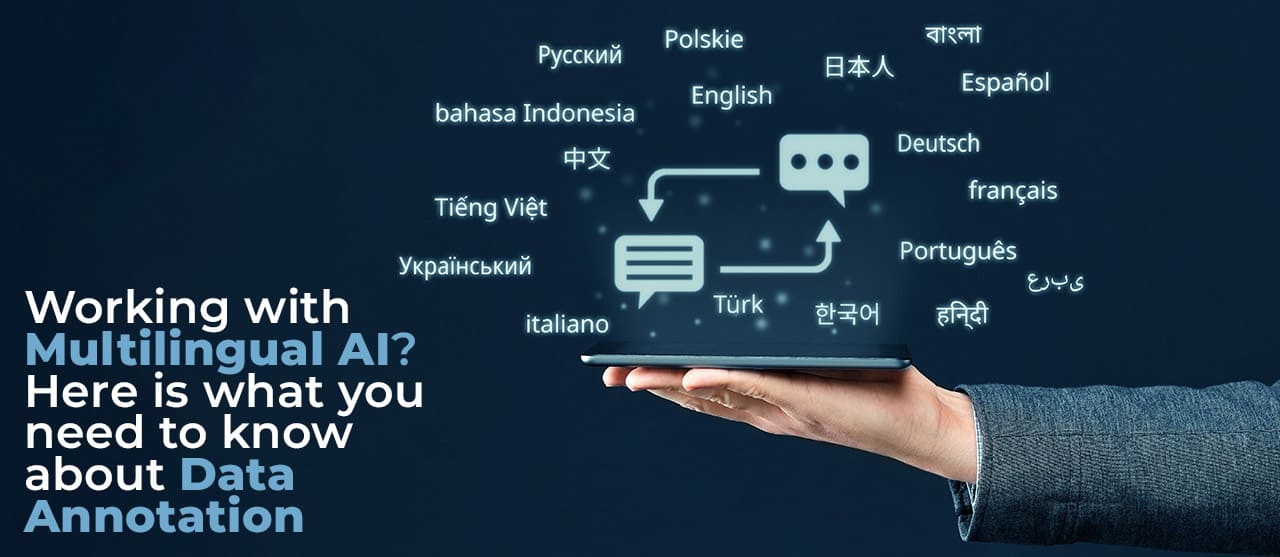
Can you make sense of the text? (비즈니스 성장에 도움이 필요합니다) It means, “Need help to grow your business?”
A trained AI solution can easily comprehend this sentence on your website. If your business has many Korean customers, having multilingual AI at your disposal would work well. Likewise, for global businesses, it’s necessary to facilitate multilingual support for customers hailing from different geographies.
What Is Multilingual AI?
Multilingual AI refers to an AI that communicates with users in various languages. For example, a multilingual chatbot on a business website can answer customer queries and engage with them in their local language. This allows businesses to engage with global customers and, at the same time, personalize communication by bridging the language gap.
What Makes Multilingual AI Different?
Take the example of Google Translate. While it is good for individual users looking to translate voice and text, businesses require more than that to drive customer service and support, internal communication, and personalization efforts.
As such, most businesses need a high level of language expertise and profound comprehension of the contextual nuances of the verbiage. This is where Multilingual AI proves beneficial. Multilingual AI enables the understanding of different languages, seamless switching between languages, and even detecting the languages the users are more likely to use. It allows businesses to reach a wider audience and provide customer support in their choice of language.
Here are why multilingual capabilities are different:
1) Accelerate Business Growth:
According to Google, over 90% of internet users prefer to access content in their familiar language. Brands with local language offerings can boost their engagement and grow faster.
2) Combat Language Barriers And Boost Sales:
Multilingual AI services help businesses connect with international customers, educate them about product offerings, provide after-sales support, and much more. Breaking language barriers can facilitate communication between the audience and the brand, which can lead to better sales and revenues.
3) Personalized Customer Experiences:
Over 78% of customers will do repeat business after a mistake if companies provide excellent customer service. Language being a primary driver of experiences, providing multilingual AI support can help businesses offer personalized customer experiences and boost loyalty.
What are the Complexities of Annotating Data for Multilingual AI?
Before linking to a single entity, AI algorithms need to know what an entity is, where it is, and how to label it. In a nutshell, multilingual AI services need to be trained. And to do this, developers use large human-annotated datasets. The process of data labeling in various formats, including images, text, audio, or video, is called data annotation. This process is conducted to ensure that machines can understand the human language and process it according to the requirements.
Each data point is run through the algorithm multiple times to create an entire dataset of rules and relationships. The challenge in data annotation in the context of multilingual AI is that it requires a lot of text (8-80 million pages of text) in different languages, written by different writers. Then, all the text needs to be collected, cleaned, placed and annotated to ensure relevant data accessibility.
Data assessment is also a major challenge while annotating the data, as it can be subjective or objective. The annotator should be smart enough to understand and label the data correctly. Another challenge is related to the workforce, as a small community of deep learning professionals can perform this work.
What Type of Annotation Is Relevant for Multilingual AI?
Data annotation can be conducted manually or automatically. In the manual data annotation process, the experts tag the specific elements of datasets. This process begins with providing raw datasets to annotators, and then they can change the datasets into video, images, transcripts, text, or a combination.
On the other hand, automatic annotation is carried out using AI systems. Machine learning models or heuristic methods are used to realize automatic data annotation. Keeping in mind the high possibility of manual errors and the high consumption of time and resources associated with manual annotation, the automatic annotation method is preferred by businesses.
However, a hybrid annotation method (a combination of manual and automatic processes) is most relevant for multilingual AI. This is because humans are good at pointing out errors and AI systems are good at massive data processing. This combination can help businesses achieve optimized results by leveraging the best of both worlds.
How Can EnFuse Help?
No business wants language to become a barrier to communication with customers. That makes it imperative to leverage multilingual AI for customer support services. However, creating a dedicated multilingual AI solution from scratch can be cost and resource intensive for your business. EnFuse can help you with end-to-end AI enablement solutions to organize your content and fuel your AI-based initiatives.
Reach out to us today & contact us to overcome all your data annotation challenges and leverage the best-in-class multilingual AI solution.

















Comment